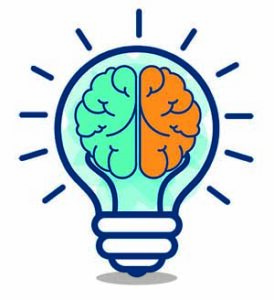

Welcome to Gk Dunia
 Have you ever tasted words, seen music, or felt colors? For some people, this is not an imagination, but a living reality called synesthesia. This unusual neurological phenomenon blurs the boundaries between the senses, giving individuals the opportunity to experience the world in a kaleidoscope of intertwined sensations.
Have you ever tasted words, seen music, or felt colors? For some people, this is not an imagination, but a living reality called synesthesia. This unusual neurological phenomenon blurs the boundaries between the senses, giving individuals the opportunity to experience the world in a kaleidoscope of intertwined sensations.
Synesthesia is a condition in which stimulation of one sensory or cognitive pathway causes an automatic and involuntary experience in a second pathway. For example, a person with synesthesia may perceive numbers as different colors, experience taste sensations when hearing certain sounds, or associate certain words with textures.
This phenomenon is not limited to a single form. Rather, it is a spectrum that includes various combinations. Grapheme-color synesthesia associates letters and numbers with specific shades, while chromesthesia allows you to see colors when listening to music or sounds. There is even vocabulary-gustatory synesthesia, where words trigger the perception of taste.
Latest Updates
About us
 Although the exact mechanism is still unknown, researchers believe that increased neural connections between brain regions responsible for different sensations may underlie synaesthesia. Masu. Brain imaging studies have shown that activity in these interconnected areas increases when synaesthetes experience unique perceptions.
Although the exact mechanism is still unknown, researchers believe that increased neural connections between brain regions responsible for different sensations may underlie synaesthesia. Masu. Brain imaging studies have shown that activity in these interconnected areas increases when synaesthetes experience unique perceptions.
Throughout history, synesthesia has left an indelible mark on art, music, and literature. Influential figures such as the famous painter Wassily Kandinsky claimed to “hear” colors and “see” sounds, and translated these experiences into abstract works of art. Musicians such as Pharrell Williams and Billy Joel have also mentioned experiencing synesthesia during the creative process.
Synesthesia can be a source of creativity and inspiration, but it can also pose challenges in daily life. Simple tasks such as reading or performing mathematical calculations can interfere with sensory associations, making it difficult for some synesthetes to concentrate.
Advances in neuroscience continue to unravel the complexities of synaesthesia. Scientists hope that a deeper understanding of this phenomenon will provide insights into perception and cognition, which could help develop treatments for a variety of neurological diseases.



Which Union Ministry has declared certain resources of ICICI Bank, HDFC Bank and NPCI as…
Which is the venue of the Industrial Decarbonization Summit 2022? [A] New Delhi [B] Mumbai…
As per the ‘Innovation Policy for Indian Railways’, what is the maximum limit of…
Recently, Stock market regulator SEBI has imposed trade restrictions on 331 firms which are suspected…
Who becomes the acting President in case there is no Vice President and the post…
Which of the following places was ruled by the Wadiyar dynasty? [A] Mysore [B] Patna…
Latest Current Affairs
1.Bologna, which was seen in the news, is the city located in which country. A)…
1.Civitavecchia, which was seen in the news, is a city in which country. A) Sri…
1.Akhaura is an important railway station in which country. A) Bhutan B) Nepal C) Bangladesh…
1.Brian Mulroney, who recently passed away, was the former Prime Minister of which country. A)…
1.International Gender Equality Prize is given by which country. A) Sweden B) Finland C) Norway…
1.What is the revised prize amount for Nobel Prize Winners, as of 2023. A) 1…
Technology

Question And Answers
Which of the following places was ruled by the Wadiyar dynasty? [A] Mysore [B] Patna…

Join our mailing list
Get the latest Current Affairs, GK (General Knowledge), General Studies for UPSC, IAS, Banking/IBPS, SSC, and States Civil Services Examinations news from Gk Dunia .
Top Stories
Which Union Ministry has declared certain resources of ICICI Bank, HDFC Bank and NPCI as…
Which is the venue of the Industrial Decarbonization Summit 2022? [A] New Delhi [B] Mumbai…
As per the ‘Innovation Policy for Indian Railways’, what is the maximum limit of…
Recently, Stock market regulator SEBI has imposed trade restrictions on 331 firms which are suspected…
Who becomes the acting President in case there is no Vice President and the post…
Which of the following places was ruled by the Wadiyar dynasty? [A] Mysore [B] Patna…

Grid Block - 2 Columns
1.Bologna, which was seen in the news, is the city located in which country. A)…
1.Civitavecchia, which was seen in the news, is a city in which country. A) Sri…
1.Akhaura is an important railway station in which country. A) Bhutan B) Nepal C) Bangladesh…
1.Brian Mulroney, who recently passed away, was the former Prime Minister of which country. A)…
Grid Block - 2 Columns
1.Bologna, which was seen in the news, is the city located in which country. A)…
1.Civitavecchia, which was seen in the news, is a city in which country. A) Sri…
1.Akhaura is an important railway station in which country. A) Bhutan B) Nepal C) Bangladesh…
1.Brian Mulroney, who recently passed away, was the former Prime Minister of which country. A)…
